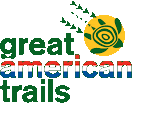By ART CHAPMANFrom the Fort Worth Star-Telegram Capt. Billy Sandifer is probably the only fishing guide on the Texas Gulf Coast who’s as proud of his conservation efforts as he is of his fish stories.
Capt. Billy Sandifer is probably the only fishing guide on the Texas Gulf Coast who’s as proud of his conservation efforts as he is of his fish stories.
He hosts a Web site that brags on his sightings of "Brown Boobies, Brown Noodies, Black-legged Kittawake and Aztec Thrush," to name a few rare birds, and he’s the driving force for an annual beach cleanup campaign.
He needs new customers to grow his guide business, but he’s aware of the dangers involved when hoards of people invade his beloved Padre Island National Seashore.
It’s a delicate dance; bring in new business, but don’t overrun nature’s bounty.
"The Hill Country has come to the beach," he said in a telephone interview this week. "There are a lot more people down here than ever before." And they don’t care about the old rules and courtesies that go along with fishing on the remote, open beaches.
"We used to say, if you could see the color of a man’s shirt, you were too close to him," Sandifer said. "You never pulled up between two men with bended rods. You went on down the beach. The fish would come to you eventually, any way."
But those subtle considerations seem to have blown away with the salt spray, he said. The more populated part of Padre Island National Seashore, or PINS as it’s referred to by the locals, covers the first 20 miles of the beach and Sandifer said it reminds him of "suburbia."
The kayak traffic on the back bays, he said, looks like a "shopping center parking lot." On weekends, the open bays are streaked with high-powered, shallow-water boats crisscrossing the sand and grass flats, and it seems that every other boat is piloted by a weekend guide.
Sandifer has a bay boat, and he offers guided trips on the bays, and on the open waters of the gulf.
But his reputation ties him to the surf on Padre Island and it’s there that most of his business takes place. It is his home in many ways, certainly his refuge.
At 62, he’s been fishing most of his life on the surf. He is a Vietnam veteran and when he returned from the war, he came back angry and full of hate, he said. He didn’t know what to make of his life, especially the cold, ungrateful reception he received in the United States.
"I bought a four-wheel drive vehicle and took off for the beach," he said. "It was a year and a half before I came out."
During that time, his face hardened to the sun and his fishing took on an almost Zen-like importance. He learned to catch sharks — all manner of sharks — and in the end, mostly big ones.
Over the years his reputation as a shark hunter grew. He began taking others with him and a business was built. He is a writer who contributes to a number of publications and he’s been the subject of innumerable stories himself.
Last month, he was honored as one of Field & Stream’s "Heroes of Conservation."
He explained in the magazine article what changed him from a shark hunter to a conservationist: "I’d catch sharks and kill many of them. But then I caught an 8 1/2 -foot, 340-pound pregnant bull shark. She was probably 30 years old. All I wanted to do was get her back into the water alive. That changed me."
He also began to look around at the seashore and he became angry at the piles and piles of debris that were piling. He organized a cleanup that continues to this day. The "Big Shell Cleanup" has removed an estimated 1.8 million pounds of trash from the 60-mile strip of coastline.
Now, he’s fighting another blight on the beach. For the past month, a red tide has scooted along the shoreline killing an incalculable number of fish.
Red tide is an algae bloom that creates toxins that attack the nervous system of some fish and paralyzes them and stops them from breathing. As they have piled along the beach, Sandifer’s business has come to a standstill.
"This is the time of year where we make our stash for the entire season," he said of the guide business. "We’ve had 37 days of the red tide and I’ve had to cancel all my trips. There are fish out there, in pockets, and we could catch them, but I don’t want to take my customers out in those conditions."
The red tide can create an "aerosol" condition that can cause eye and throat irritation in humans.
Sandifer has seen it all happen before, but he believes it comes with more regularity now. And no one knows when this tide will end. The water temperature is still in the low 70s and it needs to get to the high 50s for the tide to subside. "This could last until Christmas," he said.
But it will end, he promises. "I got $6,000 for the Field & Stream award," he said. "And if it wasn’t for that, I don’t know what I’d do. But when the red tide does disappear, the fish will be back within two hours. I don’t want anyone to think this is in any way Armageddon."
Somehow, with Sandifer’s help. The fishing will pick up, the beaches will get cleaned, the birds sighted, and Padre Island will absorb an increased number of admirers.
http://www.star-telegram.com/sports/story/1762938.html










